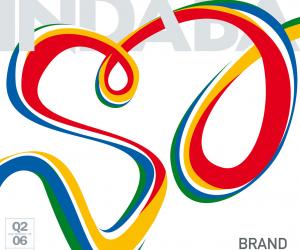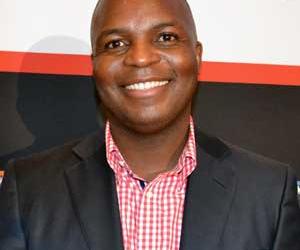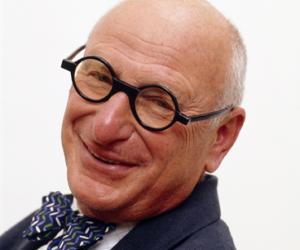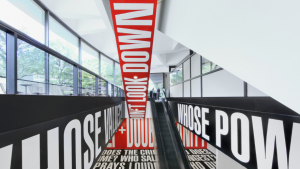First Published in
Thebe: What differentiates "nation branding" from commercial branding?
Simon: Brand is a useful way to help governments understand the value and complexity of external reputation and internal cohesion. Some of the techniques for understanding, measuring, and even managing brand are powerful if intelligently and responsibly applied to countries and cities. But the way that commercial brands are built has little in common with the way that nation brands are built: advertising, logos and slogans can be the major part of how a product or service brand is built and sustained; for countries and cities, it's simply a waste of public money.
Wally: Nation branding is much more complicated. With commercial brands you deal with few stakeholders, the decision-making processes are clear and the objectives are specific. With nation branding, stakeholders are as varied as the tourism authority, the presidency, trade and investment, etc. There are many aspects involved in nation branding, such as foreign direct investment, culture, history, public diplomacy, investment and export, and you have to deal with both the public sector and the private sector. Nation branding is about finding a differentiated offering, a core idea that makes you different from other nations.
Thebe: What are the strategic pillars of nation branding?
Simon: Connecting policy, culture, people, products and tourism in a joint strategy; a coherent approach to short, medium and long term planning; leadership from the very top - the head of government and/or head of state; honesty, transparency and inclusion; clarity of vision; and lastly, courage.
Wally: It's a balance between the internal and external focus. An understanding and integration of the input and impact of tourism, foreign direct investment, exports, politics, public diplomacy, and private/public partnership. It's also about understanding that your country is your people. You need the support of the people as nation brand champions, and key input by the media.
Thebe: Why is it necessary for a nation to brand itself? What are the benefits?
Simon: Nations don't brand themselves. It's public opinion that brands nations. It is therefore the responsibility of all good governments to do whatever they can to ensure that this "brand" is as true, fair, complete and useful as it can be to the aims of the country. A good brand makes export, investment promotion, cultural relations, tourism, international relations and talent attraction infinitely easier; it can even help to promote a climate of benign nationalism.
Wally: All nations are engaged in a competition to attract foreign investment, tourism, and export their products. They want to create a platform where they attract a greater share of the world's wealth. It's about having your place in the world and not losing out.
Thebe: What are the issues affecting "emerging/developing" nation brands?
Simon: Their often negative or out-of-date brand image is the primary barrier to their economic development. In Africa, all countries apart from SA suffer from what I call "continent branding effect": they all have to share one big, bad brand called "Africa", which is vigorously promoted by the aid industry. They urgently need to promote their separate and distinctive identities if they are not to remain objects of charity forever. I would like to abolish the brand of Africa and see 52 new country brands emerge during the next decades. This, in my opinion, is the key to Africa's prosperity and progress.
Wally: The challenge for emerging nations is to explain themselves, particularly to those nations and individuals who are relatively uninformed. South Africa in particular is a diverse nation with varying levels of sophistication, development and education. The less sophisticated the audience, the more you need to explain the country's core idea.
Because of this unique diversity, South Africa should not view itself as an emerging or developed nation. Its challenge is to explain this complicated positioning to similarly diverse and multi-leveled societies, some of which it has not had a relationship with yet, or whose stakeholders do not know South Africa as well as perhaps India, much of Europe or some parts of the United States of America. Out of enthusiasm and possibly inexperience, many developing nations spend millions of dollars, in an un-coordinated way, on branding initiatives that result in confusion.
Thebe: South Africa has invested millions of resources in institutions (International Marketing Council, South African Tourism, Proudly SA, etc.). Why, in your opinion, are we still lagging behind what are mostly European countries, with the exception of Australia, New Zealand and Canada?
Simon: Because reputation always moves far slower than reality. Other people in other countries aren't nearly as interested in you as you are in yourself.
Wally: With nation branding, you don't get an immediate reaction or results. It may take up to 20 years for attitudes and views to change, and to see the impact of your efforts - unless you have a dramatic change of the status quo, such as the fall of Apartheid and change of regime in South Africa, or the fall of Berlin Wall.
South Africa is not like Australia or any other African country. It is many nations in one, a mix of African, European and Asian history and culture. It is unique in that way. Because of this, it has an easier job than many countries because of its unusual identity.
In my view, what South Africa is struggling with, is identifying its core idea, its distinctive advantage. It should also avoid the mistake of trying to deal with and appeal to too many stakeholders. To make an impact, it needs to understand how it's perceived and focus its value proposition and reach.
Thebe: Why does the world superpower, the USA, which owns 62 of the top 100 'Most Valuable Brands in the World' (according to Interbrand/Business Week), consistently feature low in such nation branding measures such as the GMI Anholt Nation Branding Index?
Simon: Because the unpopularity of its foreign policy, the ubiquity of its products and popular culture, the decreasing relevance of its historical "brand promise" (freedom and the pursuit of wealth) and various other factors are causing it to decline. For further discussion of this complex topic, see my 2005 book, Brand America.
Wally: Much of the positioning and state of Brand America is based on what we think of America, which is: a land of opportunity, which we admire, where anybody can do and be anything; it evinces technological advancement and success which we admire but envy at the same time; it has commercial successes built by brands like McDonalds and Coca Cola; and, there's the way the government behaves and wields its power.
Thebe: Is the future of South Africa necessarily linked to the future of Africa? Or can brand South Africa "go it alone"?
Simon: South Africa has been "going it alone" ever since the end of Apartheid. It's the only country in Africa that has a truly separate identity (apart from perhaps Nigeria, which has a very strong but very negative image).
Wally: There are 25 European countries, each with a distinct identity, that have a common loyalty to Europe. There is nothing wrong with having a multiplicity of loyalties. South Africa does not have to be overwhelmed by the rest of the continent, but can retain its distinct identity, while remaining loyal to the continent.
Thebe: Which nations are the benchmarks? And how did they get it right?
Simon: Ireland, Japan, UK, New Zealand, Spain, South Africa and Australia. Ireland was a foreign direct investment miracle; Japan, an export miracle; the UK, a leadership and economic miracle; New Zealand and Australia, a tourism miracle; Spain and South Africa, a political and cultural miracle. That's how their new brands were built. Not, needless to say, through advertising or other kinds of marketing, but by the things they made and the things they did. These are perfect examples of what I call "policy-based branding" which is entirely different from "communication-based branding". The main advantage of this approach, apart from the fact that it's a hundred times more effective, is that all the money spent on it directly benefits the economy of the country, rather than going into the pockets of advertising and design agencies and media owners.
Wally: Spain is a good example of a good national brand, and it took them 20 to 25 years to get there.
Thebe: The new South Africa is relatively young. How difficult is it, and is it necessary, to shed the history in "re-branding" itself?
Simon: It will happen naturally - very slowly indeed, but quite naturally - when a country's present and future are more interesting than the past. It's all a matter of how interesting people find what you do.
Wally: The past is relatively unimportant. With Apartheid and the resultant pariah status, and with the miracle of transition embodied by Mandela, South Africa had a single-minded proposition. Right now, it's beginning to look like just one of hundreds of other countries. What South Africa needs now is a focus or core idea.
Thebe: South Africa has many well-recognised institutions, symbols (the flag is among the top three most recognised in the world), individuals (Nelson Mandela), companies (Sappi, De Beers, Anglo American), etc. What role, if any, do they play, and how can they be leveraged to shape the brand positioning of South Africa?
Simon: They can all be important. At the moment, Mandela is about 90% of the image of the country. The companies, tourism, other people, sport, and culture need to be promoted to "round out" what is still a pretty thin brand.
Wally: Institutions shape people's perceptions about national brands. Public diplomacy and politicians play a major role in that. But they must be used carefully.
Thebe: How can a country with many symbols spanning fauna and flora, various institutions, 11 languages and differing cultures, symbolically present itself?
Simon: All countries are diverse, unlike products. Richness is an asset, not an obstacle. I don't think one needs to worry too much about symbolic presentation. That's an advertising issue and is a concern merely for the tourist board.
Wally: You should not have too many symbols or initiatives because they confuse the audience. Examine what you want to say, what image you want to project and how you are going to communicate it. In simple terms, visualise your core idea. It's about simplifying your message. o
About these thinkers
Simon Anholt advises governments, ministries, civil services and NGOs on the branding aspects of public diplomacy, economic development, public affairs, cultural relations and trade, tourism and export promotion. He is a prolific author on the subject and a well-known public speaker, editor and broadcaster on these and many related topics. Visit www.earthspeak.com.
Wally Olins is the co-founder of brand consulting house Wolff Olins, and the president of Saffron, a EU-based brand consultancy. He lectures at a number of Business Schools in Europe and is a published author on the subject of brands. His clients include BT, Prudential, Repsol, Renault and Volkswagen. Visit www.wallyolins.com.
Thebe Ikalafeng is the founder of Brand Leadership and the forum www.leadingbrands.org, as well as a partner at Two Tone. He is a non-executive director of Mercantile Bank Holdings and Foodcorp, and a member of the Vega School of Brand Communications Governing Body. A sought-after speaker, he has lectured and published on branding.
Let's keep at it!
Design Indaba commissioned three top agencies to apply their skills to the uber brand, South Africa, because we believe that there is a gap between our country's image and reputation, and the realities of its amazing achievements since democracy. Here's what switch, two tone and hklm have come up with to help close that gap.
- Brand the Beloved Country: Brief by Ravi Naidoo
- "Why Brand a Nation?": Thebe Ikalafeng asks Wally Olins and Simon Anholt
- Selling SA: "Feel it" by Switch
- Selling SA: "Flying high" by Two Tone
- Selling SA: "View to a thrill" by HKLM
Thebe: What differentiates "nation branding" from commercial branding?
Simon: Brand is a useful way to help governments understand the value and complexity of external reputation and internal cohesion. Some of the techniques for understanding, measuring, and even managing brand are powerful if intelligently and responsibly applied to countries and cities. But the way that commercial brands are built has little in common with the way that nation brands are built: advertising, logos and slogans can be the major part of how a product or service brand is built and sustained; for countries and cities, it's simply a waste of public money.
Wally: Nation branding is much more complicated. With commercial brands you deal with few stakeholders, the decision-making processes are clear and the objectives are specific. With nation branding, stakeholders are as varied as the tourism authority, the presidency, trade and investment, etc. There are many aspects involved in nation branding, such as foreign direct investment, culture, history, public diplomacy, investment and export, and you have to deal with both the public sector and the private sector. Nation branding is about finding a differentiated offering, a core idea that makes you different from other nations.
Thebe: What are the strategic pillars of nation branding?
Simon: Connecting policy, culture, people, products and tourism in a joint strategy; a coherent approach to short, medium and long term planning; leadership from the very top - the head of government and/or head of state; honesty, transparency and inclusion; clarity of vision; and lastly, courage.
Wally: It's a balance between the internal and external focus. An understanding and integration of the input and impact of tourism, foreign direct investment, exports, politics, public diplomacy, and private/public partnership. It's also about understanding that your country is your people. You need the support of the people as nation brand champions, and key input by the media.
Thebe: Why is it necessary for a nation to brand itself? What are the benefits?
Simon: Nations don't brand themselves. It's public opinion that brands nations. It is therefore the responsibility of all good governments to do whatever they can to ensure that this "brand" is as true, fair, complete and useful as it can be to the aims of the country. A good brand makes export, investment promotion, cultural relations, tourism, international relations and talent attraction infinitely easier; it can even help to promote a climate of benign nationalism.
Wally: All nations are engaged in a competition to attract foreign investment, tourism, and export their products. They want to create a platform where they attract a greater share of the world's wealth. It's about having your place in the world and not losing out.
Thebe: What are the issues affecting "emerging/developing" nation brands?
Simon: Their often negative or out-of-date brand image is the primary barrier to their economic development. In Africa, all countries apart from SA suffer from what I call "continent branding effect": they all have to share one big, bad brand called "Africa", which is vigorously promoted by the aid industry. They urgently need to promote their separate and distinctive identities if they are not to remain objects of charity forever. I would like to abolish the brand of Africa and see 52 new country brands emerge during the next decades. This, in my opinion, is the key to Africa's prosperity and progress.
Wally: The challenge for emerging nations is to explain themselves, particularly to those nations and individuals who are relatively uninformed. South Africa in particular is a diverse nation with varying levels of sophistication, development and education. The less sophisticated the audience, the more you need to explain the country's core idea.
Because of this unique diversity, South Africa should not view itself as an emerging or developed nation. Its challenge is to explain this complicated positioning to similarly diverse and multi-leveled societies, some of which it has not had a relationship with yet, or whose stakeholders do not know South Africa as well as perhaps India, much of Europe or some parts of the United States of America. Out of enthusiasm and possibly inexperience, many developing nations spend millions of dollars, in an un-coordinated way, on branding initiatives that result in confusion.
Thebe: South Africa has invested millions of resources in institutions (International Marketing Council, South African Tourism, Proudly SA, etc.). Why, in your opinion, are we still lagging behind what are mostly European countries, with the exception of Australia, New Zealand and Canada?
Simon: Because reputation always moves far slower than reality. Other people in other countries aren't nearly as interested in you as you are in yourself.
Wally: With nation branding, you don't get an immediate reaction or results. It may take up to 20 years for attitudes and views to change, and to see the impact of your efforts - unless you have a dramatic change of the status quo, such as the fall of Apartheid and change of regime in South Africa, or the fall of Berlin Wall.
South Africa is not like Australia or any other African country. It is many nations in one, a mix of African, European and Asian history and culture. It is unique in that way. Because of this, it has an easier job than many countries because of its unusual identity.
In my view, what South Africa is struggling with, is identifying its core idea, its distinctive advantage. It should also avoid the mistake of trying to deal with and appeal to too many stakeholders. To make an impact, it needs to understand how it's perceived and focus its value proposition and reach.
Thebe: Why does the world superpower, the USA, which owns 62 of the top 100 'Most Valuable Brands in the World' (according to Interbrand/Business Week), consistently feature low in such nation branding measures such as the GMI Anholt Nation Branding Index?
Simon: Because the unpopularity of its foreign policy, the ubiquity of its products and popular culture, the decreasing relevance of its historical "brand promise" (freedom and the pursuit of wealth) and various other factors are causing it to decline. For further discussion of this complex topic, see my 2005 book, Brand America.
Wally: Much of the positioning and state of Brand America is based on what we think of America, which is: a land of opportunity, which we admire, where anybody can do and be anything; it evinces technological advancement and success which we admire but envy at the same time; it has commercial successes built by brands like McDonalds and Coca Cola; and, there's the way the government behaves and wields its power.
Thebe: Is the future of South Africa necessarily linked to the future of Africa? Or can brand South Africa "go it alone"?
Simon: South Africa has been "going it alone" ever since the end of Apartheid. It's the only country in Africa that has a truly separate identity (apart from perhaps Nigeria, which has a very strong but very negative image).
Wally: There are 25 European countries, each with a distinct identity, that have a common loyalty to Europe. There is nothing wrong with having a multiplicity of loyalties. South Africa does not have to be overwhelmed by the rest of the continent, but can retain its distinct identity, while remaining loyal to the continent.
Thebe: Which nations are the benchmarks? And how did they get it right?
Simon: Ireland, Japan, UK, New Zealand, Spain, South Africa and Australia. Ireland was a foreign direct investment miracle; Japan, an export miracle; the UK, a leadership and economic miracle; New Zealand and Australia, a tourism miracle; Spain and South Africa, a political and cultural miracle. That's how their new brands were built. Not, needless to say, through advertising or other kinds of marketing, but by the things they made and the things they did. These are perfect examples of what I call "policy-based branding" which is entirely different from "communication-based branding". The main advantage of this approach, apart from the fact that it's a hundred times more effective, is that all the money spent on it directly benefits the economy of the country, rather than going into the pockets of advertising and design agencies and media owners.
Wally: Spain is a good example of a good national brand, and it took them 20 to 25 years to get there.
Thebe: The new South Africa is relatively young. How difficult is it, and is it necessary, to shed the history in "re-branding" itself?
Simon: It will happen naturally - very slowly indeed, but quite naturally - when a country's present and future are more interesting than the past. It's all a matter of how interesting people find what you do.
Wally: The past is relatively unimportant. With Apartheid and the resultant pariah status, and with the miracle of transition embodied by Mandela, South Africa had a single-minded proposition. Right now, it's beginning to look like just one of hundreds of other countries. What South Africa needs now is a focus or core idea.
Thebe: South Africa has many well-recognised institutions, symbols (the flag is among the top three most recognised in the world), individuals (Nelson Mandela), companies (Sappi, De Beers, Anglo American), etc. What role, if any, do they play, and how can they be leveraged to shape the brand positioning of South Africa?
Simon: They can all be important. At the moment, Mandela is about 90% of the image of the country. The companies, tourism, other people, sport, and culture need to be promoted to "round out" what is still a pretty thin brand.
Wally: Institutions shape people's perceptions about national brands. Public diplomacy and politicians play a major role in that. But they must be used carefully.
Thebe: How can a country with many symbols spanning fauna and flora, various institutions, 11 languages and differing cultures, symbolically present itself?
Simon: All countries are diverse, unlike products. Richness is an asset, not an obstacle. I don't think one needs to worry too much about symbolic presentation. That's an advertising issue and is a concern merely for the tourist board.
Wally: You should not have too many symbols or initiatives because they confuse the audience. Examine what you want to say, what image you want to project and how you are going to communicate it. In simple terms, visualise your core idea. It's about simplifying your message. o
About these thinkers
Simon Anholt advises governments, ministries, civil services and NGOs on the branding aspects of public diplomacy, economic development, public affairs, cultural relations and trade, tourism and export promotion. He is a prolific author on the subject and a well-known public speaker, editor and broadcaster on these and many related topics. Visit www.earthspeak.com.
Wally Olins is the co-founder of brand consulting house Wolff Olins, and the president of Saffron, a EU-based brand consultancy. He lectures at a number of Business Schools in Europe and is a published author on the subject of brands. His clients include BT, Prudential, Repsol, Renault and Volkswagen. Visit www.wallyolins.com.
Thebe Ikalafeng is the founder of Brand Leadership and the forum www.leadingbrands.org, as well as a partner at Two Tone. He is a non-executive director of Mercantile Bank Holdings and Foodcorp, and a member of the Vega School of Brand Communications Governing Body. A sought-after speaker, he has lectured and published on branding.
Let's keep at it!
Design Indaba commissioned three top agencies to apply their skills to the uber brand, South Africa, because we believe that there is a gap between our country's image and reputation, and the realities of its amazing achievements since democracy. Here's what switch, two tone and hklm have come up with to help close that gap.
- Brand the Beloved Country: Brief by Ravi Naidoo
- "Why Brand a Nation?": Thebe Ikalafeng asks Wally Olins and Simon Anholt
- Selling SA: "Feel it" by Switch
- Selling SA: "Flying high" by Two Tone
- Selling SA: "View to a thrill" by HKLM













